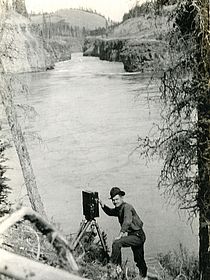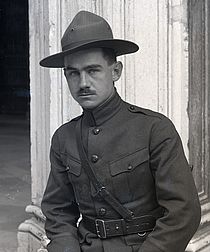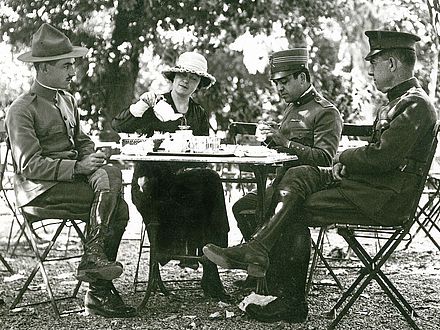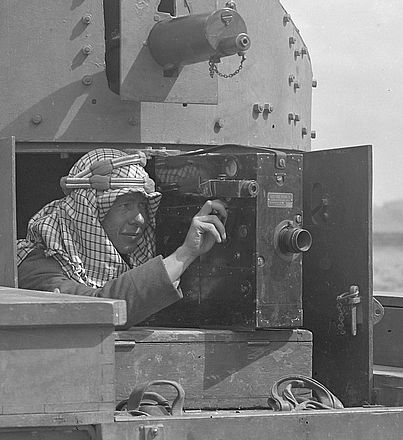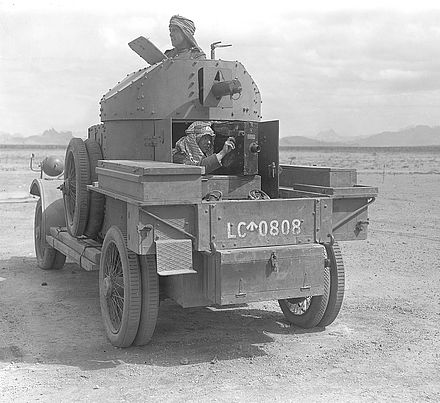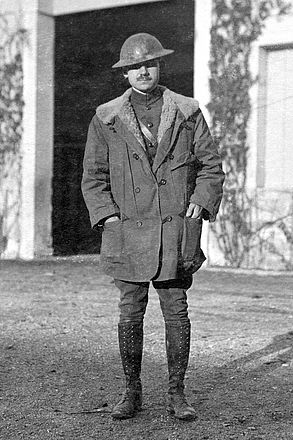World War I Propagandist
Young Lowell Thomas was selected by President Wilson’s Secretary of the Interior, Franklin Lane, to head up a national “See America First” promotional program. But a month later on April 6, 1917, Lowell Thomas’ twenty-fifth birthday, the United States declared war on Germany and her allies and “America First” was canceled. The U.S. War Department asked Thomas to report on World War I under its auspices with authorization from President Wilson. He was to gather material and stories that “would encourage the American people’s support” for the war — an assignment that would seem a conflict of interest to journalists covering a war today.
Such an understanding was an official sanction of credibility, and not considered the subjugation of a journalist’s integrity. The world of 1917 was formally organized and stratified socially, with bureaucratic hurdles and limited access especially overseas. Thomas was proud of his government auspices and even signed some of his correspondence, “Lowell Thomas, Propagandist.”
The fighting and stories were overseas, and the assignment required that Thomas come up with his own funding to get there. Reaching out to the Chicago industrialists who benefited from his newspaper exposé on Carlton Betts, Thomas raised $100,000 — well over a million in today’s dollars. He purchased the contract of crack cameraman Harry Chase, formed a company called Thomas Travelogues, got married, and set off for Europe with his new bride, Frances, and his cameraman to cover the war.
In Europe, Thomas had unprecedented access to the war. He was assigned General Webb Hayes, son of the 19th president, to act as a liaison to expedite his coverage and cut through “old world” regulations. Both Lowell and his wife Frances kept journals of their travels, which together with surviving letters provide a carefully written account of their experiences and observations.


